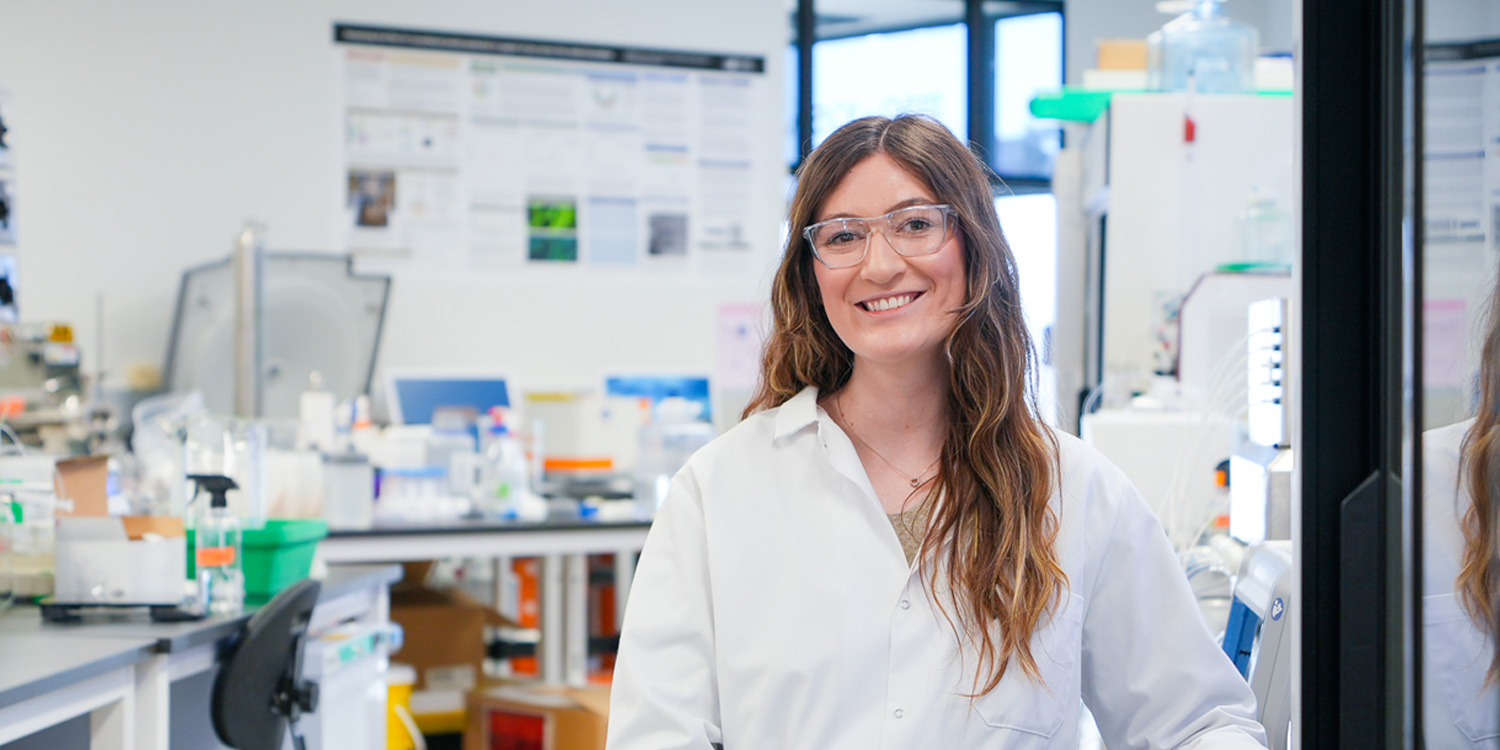Working on It: Inside the Canadian lab making the ingredients for next-generation medicines
By Dominique Ritter | May 3, 2025

The future of vaccines, lab-grown meats and medical research can get a big boost by making their production more efficient, climate-friendly and affordable. Are tiny bugs the fix?
In this series, we explore cool new jobs in the innovation economy.
If history has taught us anything it’s this: when you spot a lone fruit fly in your kitchen’s air space, you are experiencing a situation of the utmost impermanence. Because as soon as you see that first airborne invader, you can assume there will be at least a bajillion more before you can formulate the thought, I guess I’ll make another banana bread?
But what you need to know is that there’s an upside to the fruit fly that is totally disproportionate to its wee size. Thanks to its superfast and prolific rate of reproduction as well as its genes, which are surprisingly similar to our own, Drosophila melanogaster has been a research darling for more than a century. What’s new is how Edmonton-based startup Future Fields is using fly-based biotech to power new scientific advances. The company’s early work to replace the expensive, resource-intensive bioreactors needed to produce ingredients for lab-grown meat is now being applied in biotherapeutics and medical research. Leveraging recombinant technology — a method of producing genetic material using host cells — the team at Future Fields produces proteins by essentially turning fruit flies into tiny biomanufacturing plants. To find out what it’s like to work on the bleeding edge of biotech, how exactly recombinant technology works and why Drosophila is so fly, we talked to Laine Lysyk, the protein biochemistry lead at Future Fields.
How fruit flies help medical research
“We love the fruit fly! There have been six Nobel prizes associated with Drosophila research and it’s given us so many genetic tools. Drosophila physiology seems like it would be so different from human physiology, but many of the pathways are the same. It’s really expanded our understanding of our own selves. It’s just so neat.
“I use fruit flies to produce recombinant proteins. A recombinant protein is when you take a gene, that DNA sequence, and you can put it into what you call an expression host. Then me and my team extract and purify those specific recombinant proteins, which then get sent to scientists to use in their research applications.”
Why recombinant proteins are so important
“Recombinant proteins are involved in so much medical research and in therapeutic applications: They’re used to treat certain types of cancer, rheumatoid arthritis, diabetes, so there’s a need for large amounts of these proteins.
“Currently, recombinant proteins are expressed in systems such as E.coli, yeast and mammalian cells. These are grown in these huge bioreactors, which are very costly to scale up. That’s challenge number one that we’re aiming to solve at Future Fields. There are a lot of advantages to using fruit flies: they’re inexpensive, efficient and sustainable. It’s very easy to rear more flies. Third-party environmental assessments have found that fly-based recombinant protein production at scale will emit 86 percent less carbon and use 74 percent less water than conventional methods.
“We can also produce more challenging proteins with Drosophila. If you’re using something like E.coli — a simple bacteria — it’s not going to be able to produce human proteins that may have complex modifications or a much more complex structure.
“Producing higher-quality, difficult-to-express proteins is going to move medical research along a lot quicker. In organ regeneration and stem cell research, we’re actively working on complex protein expression for clients across biopharma, agriculture and food innovations. We want to ensure that people who are tackling challenging problems have the resources they need to solve them.”
What it’s like being a protein lead
“We start with our input — our biomass — which is just flies or larvae. Once the protein is ready to be extracted, we’ll homogenize it using some really interesting equipment: something called a bead mill homogenizer, which vigorously shakes small beads in a sample. It’s like a small-scale but aggressive paint shaker. Then the protein is processed and put on something called a chromatography system, which is what we use to purify one very specific protein. Once it has gone through all of its quality control checkpoints, the protein gets vialed, lyophilized [freeze-dried], and then it goes into our inventory.
What drew her to the field
When I was in high school, I did a program where I got to do a little research stint in a lab at the University of Alberta. I had always known I wanted to do sciences, but didn’t know what direction to take. During that biochemistry program, I was like, ‘Oh, that’s really interesting.’ I had never thought about research in that way before. Just seeing how one specific protein molecule has such an impact on functions in the cell was so cool to me. After my undergrad, I did a master’s in biochemistry at the U of A. It was a full-circle moment because I went back to the lab where I had been in high school. The same professor, Joanne Lemieux, took me on as a student.
“I owe so much of my confidence in being a scientist to Joanne because she really encouraged me and other grad students to follow through on our ideas, go to conferences, talk with other scientists and students, and get used to presenting our data. She’s a great role model for women in science.”
How she got the job
“In 2020, Future Fields was hiring and they told me they had this new protein expression platform. It was quite secretive at the time — it hadn’t been revealed that they used fruit flies. They were looking for protein scientists to purify proteins from this model system. I was like, ‘OK, that sounds really interesting.’ I’ve been here ever since.”
What’s next for the Future Fields?
“The newest class of proteins we’re working on producing is membrane proteins, which are notoriously challenging to work with. There’s a large demand for them because this class of protein is a very common drug target. In order for successful initial screening during drug development, companies must work with their target protein that’s as similar as possible (in structure and conformation) to what would be found natively. We have several membrane protein projects underway and we look forward to seeing positive results by mid-year.”
What aspiring protein scientists need to know
“Reach out to companies you’re interested in, learn what they’re doing there and talk to researchers about their work. Having a research background is important. If you’re an undergrad who eventually wants to work in industry, look for research opportunities at your university because that’s really going to open a lot of doors.”
As told to Dominique Ritter.
MaRS Impact Health conference on May 7 & 8 brings together the innovators at the frontlines of Canada’s healthcare revolution. Check out the full program here.
Photo courtesy of Future Fields
 Dominique Ritter
Dominique Ritter